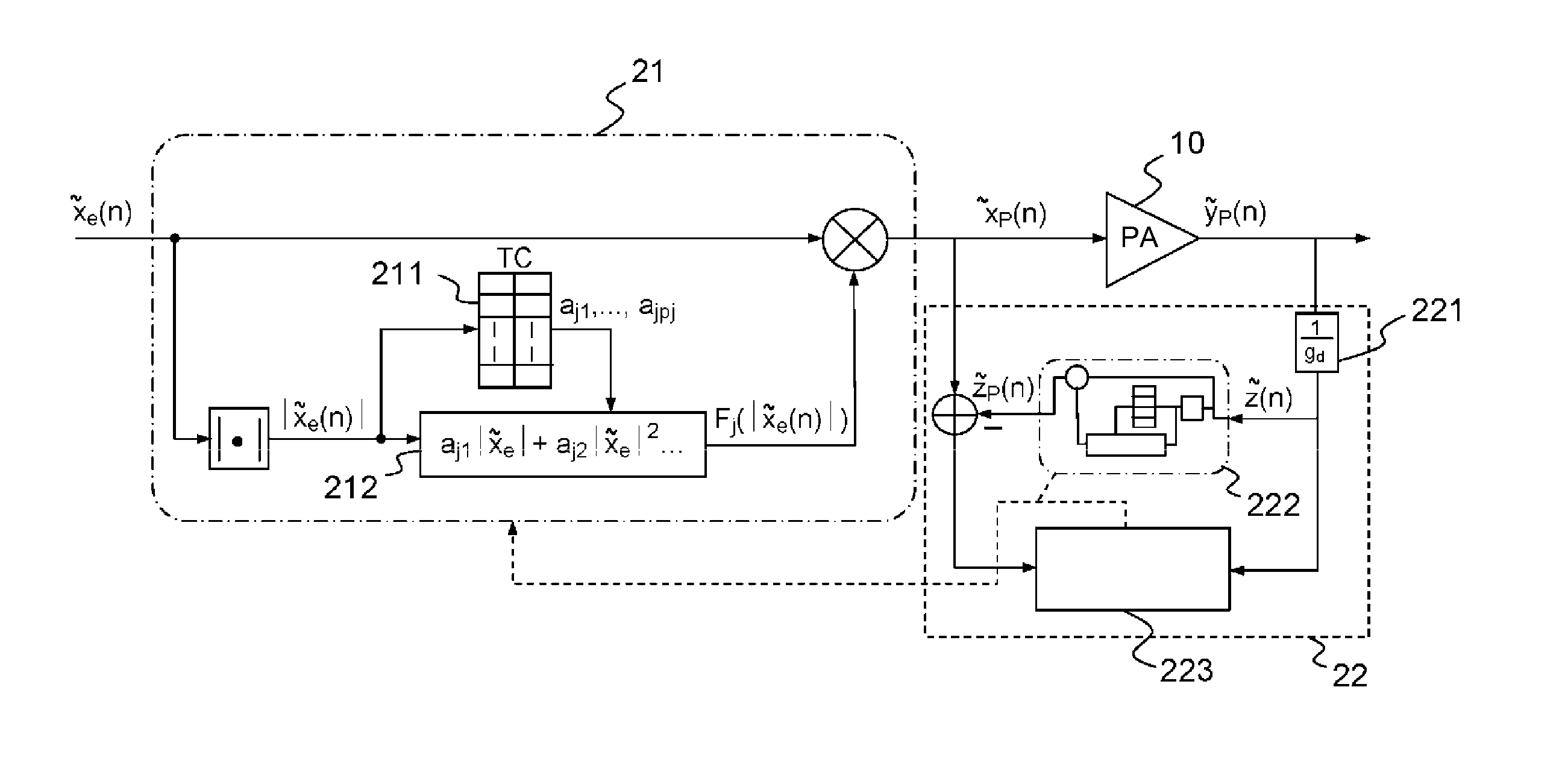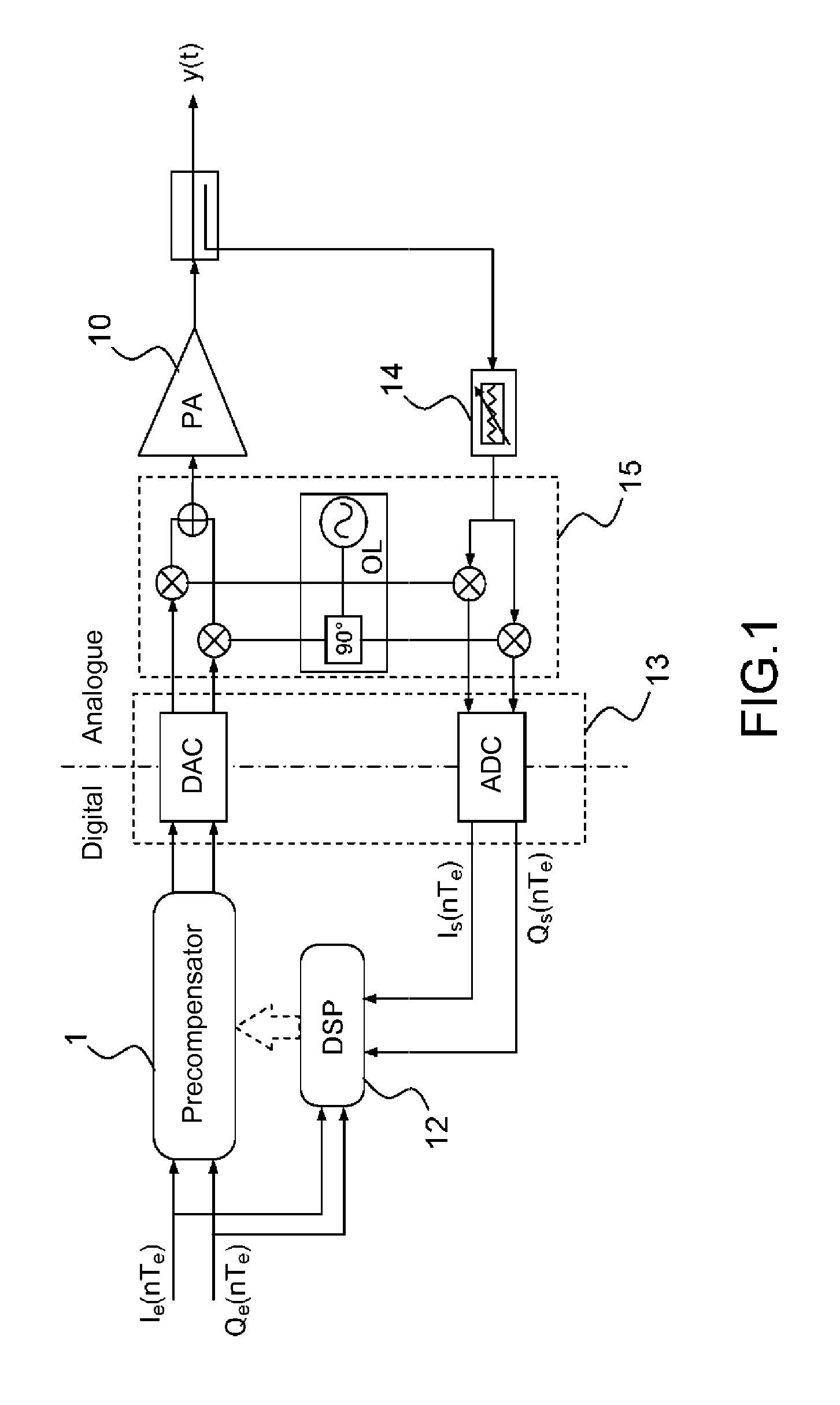Linearization device for a power amplifier
a power amplifier and linearization technology, applied in the field of linearization devices of power amplifiers, can solve the problems of increasing the requirements of radio communication devices, in terms of spectral efficiency, and non-linear behavior of power amplifiers, and achieve the effects of reducing and increasing the number of power amplifiers
- Summary
- Abstract
- Description
- Claims
- Application Information
AI Technical Summary
Benefits of technology
Problems solved by technology
Method used
Image
Examples
Embodiment Construction
[0023]FIG. 1, shows the schematic diagram of a transmission chain including a power amplifier combined with a known adaptive digital baseband predistortion device.
[0024]A transmission chain known in itself from prior art, for transmitting a phase and amplitude modulated radio frequency signal for example, may include a power amplifier 10 restoring an amplified signal y(t). The digitized input signal may be in baseband, for example after shaping by a low-pass filter achieved by a transmission filter not shown in the figure, then broken down into in-phase and quadrature components Ie(nTe) and Qe(nTe), Te being the inverse of the signal sampling frequency. The components Ie(nTe) and Qe(nTe) are applied at the input of a precompensator 11, restoring after processing of the two input signals, two digital output signals.
[0025]In parallel, the I and Q components are applied at the input of a digital signal processing module DSP 12.
[0026]A conversion block 13 includes a digital-to-analogue ...
PUM
 Login to View More
Login to View More Abstract
Description
Claims
Application Information
 Login to View More
Login to View More - R&D
- Intellectual Property
- Life Sciences
- Materials
- Tech Scout
- Unparalleled Data Quality
- Higher Quality Content
- 60% Fewer Hallucinations
Browse by: Latest US Patents, China's latest patents, Technical Efficacy Thesaurus, Application Domain, Technology Topic, Popular Technical Reports.
© 2025 PatSnap. All rights reserved.Legal|Privacy policy|Modern Slavery Act Transparency Statement|Sitemap|About US| Contact US: help@patsnap.com



